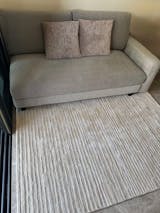How to Shop for Homeware When Travelling
Do Your Research
Before you go, find out the crafts and products the city or country you’re visiting is known for. Check the schedules and locations of various markets, souks, bazaars, and flea markets. These are the best spots for immersing yourself in the place’s culture, for trying out local food and checking out locally made handicrafts.Look For Something Beautiful and Useful
For me, handmade products, especially homeware, make the best travel souvenirs. They capture the essence of a place – from traditional methods of craftsmanship and raw materials unique to the land, to a glimpse into locals’ lifestyles. By bringing one home, you make all of that part of your everyday life.
Ask the Right Questions
Get to know the piece you’re eyeing so you can gain a better appreciation of it. Start by asking the seller whether it’s machine or handmade, and what materials it’s made of. The answers will give you a clue to the quality of the product. In most cases, natural raw materials like paper, stone, wood, leather, plants, and natural fabrics have better longevity and aesthetic value.You’ll probably encounter shopkeepers who are makers themselves or have been in the business for a very long time. They’re the ones who are usually keen to chat about their products.
Use Your Senses
For garments and textiles, make sure to examine the front and back. If dye or ink seeps through the back, it’s likely handmade. When buying rugs and carpets, check the knots or weave from the back. If they’re even throughout, they’re probably machine-made. Before purchasing something touted as handmade, check other pieces of the same design. If they are uniform, chances are you’re looking at a mass- produced item – the works of artisans, however skilled, are always nuanced, with no two pieces exactly alike.Purchase Sustainable Items
Artisanal products are generally sustainable because they are made using natural materials that are abundant in the area. Plus, they’re locally made, so they have a smaller carbon footprint and tend to last longer. What’s more, you’ll be providing a means of livelihood to local artisans, allowing them to support their families while keeping traditional craftsmanship alive.
Through my travels, I realised how handmade pieces helped me become more aware of culture, beauty, function, and sustainability. When you buy something handmade, you support the artisan behind it as well as his or her family. This inspired me to set up Living DNA in 2015. The shop carries rugs, textiles, and homeware sourced from artisans around the world, but with a modern twist. I tweak the designs, so our products are different. We want to make the world a better place, one rug at a time.
First published on Scoot Airlines In-Flight Magazine, December 2019.









